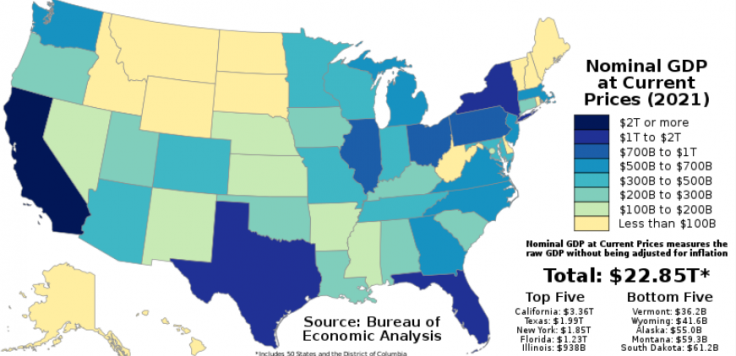Revised gross domestic product figures released on Wednesday showed that the US economy expanded at an annual rate of 2.1 percent in the second quarter, compared with an earlier estimate of 2.4 percent.
"The updated estimates primarily reflected downward revisions to private inventory investment and nonresidential fixed investment that were partly offset by an upward revision to state and local government spending", said the US Bureau of Economic Analysis said in a statement.

Better Than First Quarter
The second quarter growth was, however, better than the pace of economic growth in the first quarter. In the first quarter, real GDP had risen 2.0 percent. The current‑dollar GDP increased 4.1 percent at an annual rate, or $268.6 billion, in the second quarter to a level of $26.80 trillion, a downward revision of $36.3 billion from the previous estimate, the Bureau of Economic Analysis added.
Economists conclude that the latest figures show the economy's resilience, given the backdrop of a more than 500 basis point increase in interest rates since March 2022. The fact that the economy is growing more than 1.8 percent, which the Federal Reserve considers as the non-inflationary growth rate, is a welcome news.
Driven by Consumers
Data also showed that the Personal Consumption Expenditure Price Index rose 2.5 percent, suggesting that the economy is largely being driven by consumers. The PCE price index excluding food and energy prices rose 3.7 percent.

The Bureau of Economic Analysis said the increase in real GDP reflected a rise in consumer spending, nonresidential fixed investment, state and local government spending, and federal government spending.
On the downside for growth, the central bank is more than likely to retain the high interest rate regime for some more time given that the economic growth is not causing alarm. Just last week, Federal Reserve Chairman Jerome Powell said the Fed may need to raise interest rates further to cool still-too-high inflation. "We will proceed carefully as we decide whether to tighten further or, instead, to hold the policy rate constant and await further data ... It is the Fed's job to bring inflation down to our 2% goal, and we will do so," Powell said in his keynote address at the annual Jackson Hole Economic Policy Symposium last week.








